Abstract
Penicillin toxicity in the guinea pig may be manifested in several different ways, and it is proposed that these toxic effects be categorized into three syndromes: (1) toxic syndrome, characterized by acute fatal illness; (2) hemorrhagic syndrome, characterized by delayed illness with leukopenia and thrombocytopenia, and culminating in massive visceral hemorrhages; (3) chronic syndrome, characterized by retardation of growth and alopecia, a condition somewhat resembling “runt disease.” A virus having some of the properties of a parvovirus has been isolated repeatedly from animals ill or dying of penicillin-induced disease. This finding has been construed as being activation of a latent virus by this antibiotic, but the relationship, if any, of the phenomenon of viral activation to the syndromes produced by penicillin and its frequent lethal toxicity is unknown. That a strong association exists, however, has been established. Of some 60 guinea pigs which received injections of penicillin three developed tumors and four others were found to have gallstones. A virus similar or identical to the guinea pig virus also has been isolated from hamsters dying of penicillin-induced disease. It is hypothesized that the absorption of endotoxin, resulting from the well known change in intestinal flora caused by penicillin, produces a state of immunodeficiency which regularly gives rise to activation of a latent virus, and perhaps, rarely, to the development of malignant neoplasms.
Full text
PDF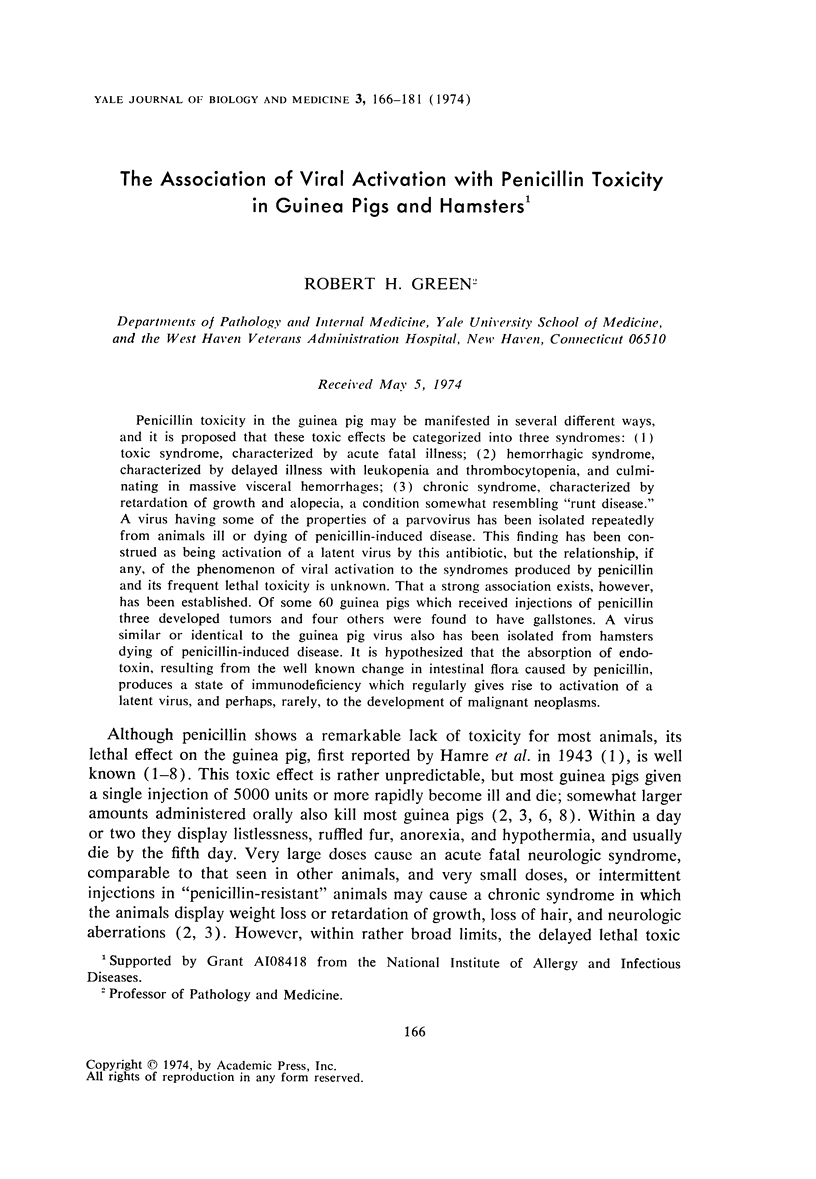

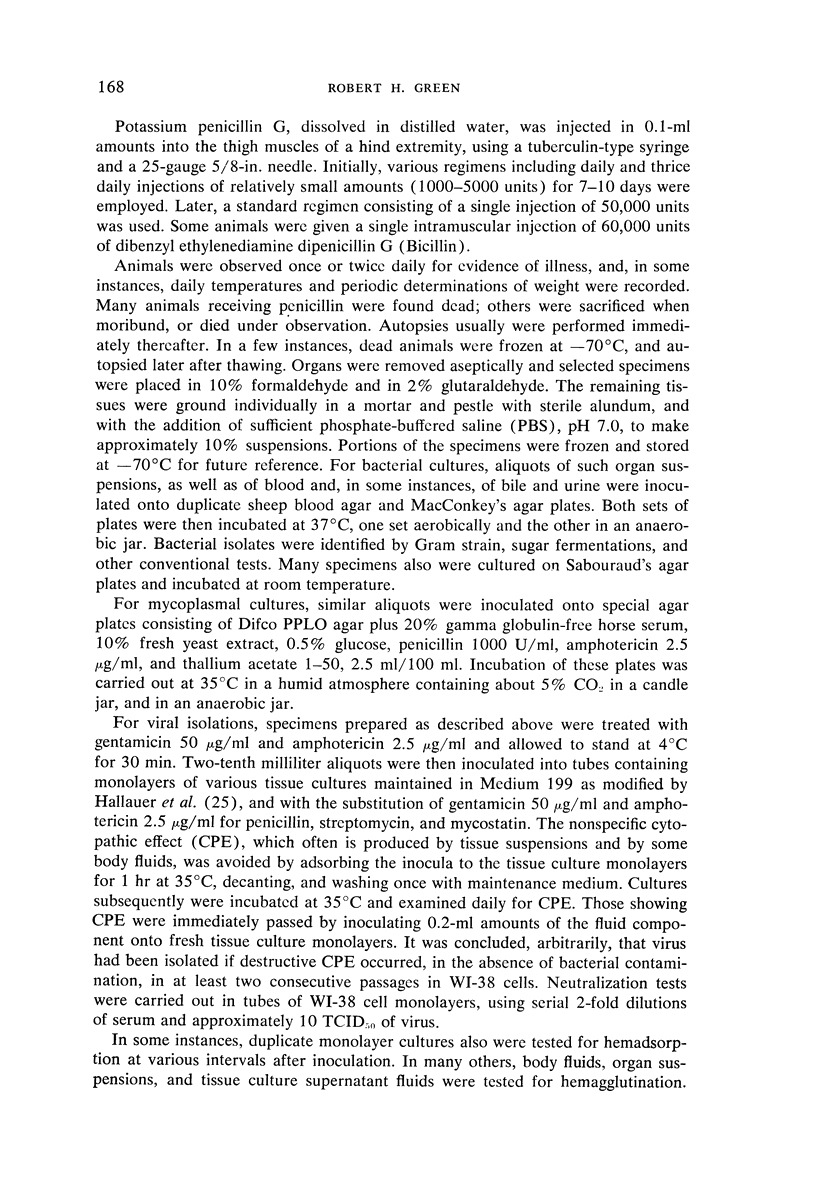
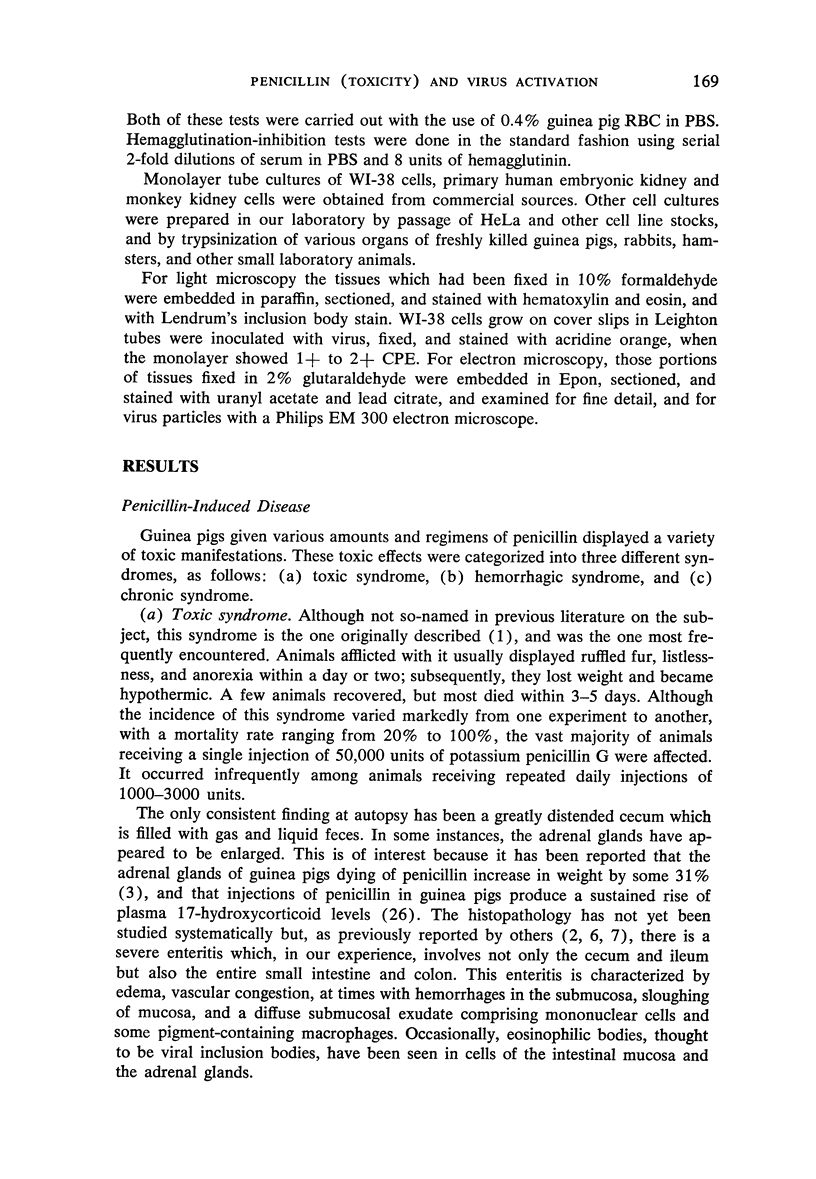
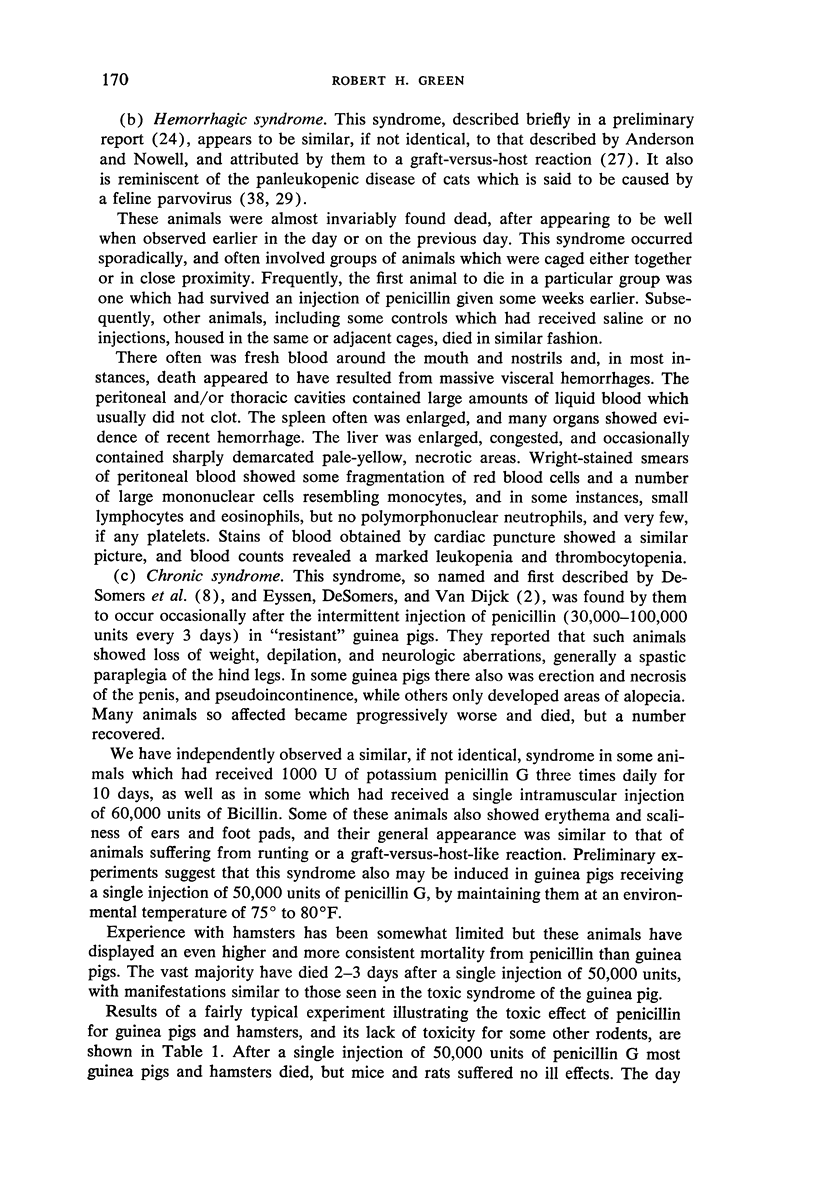
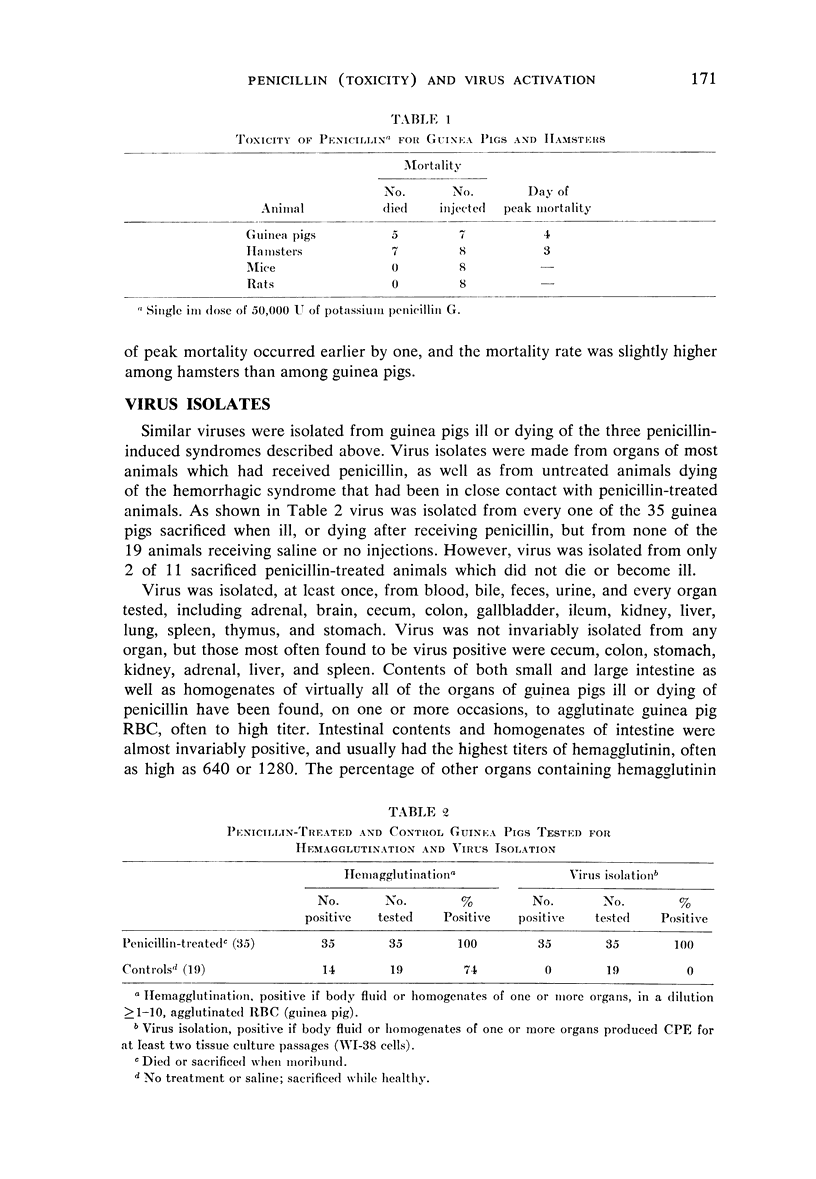
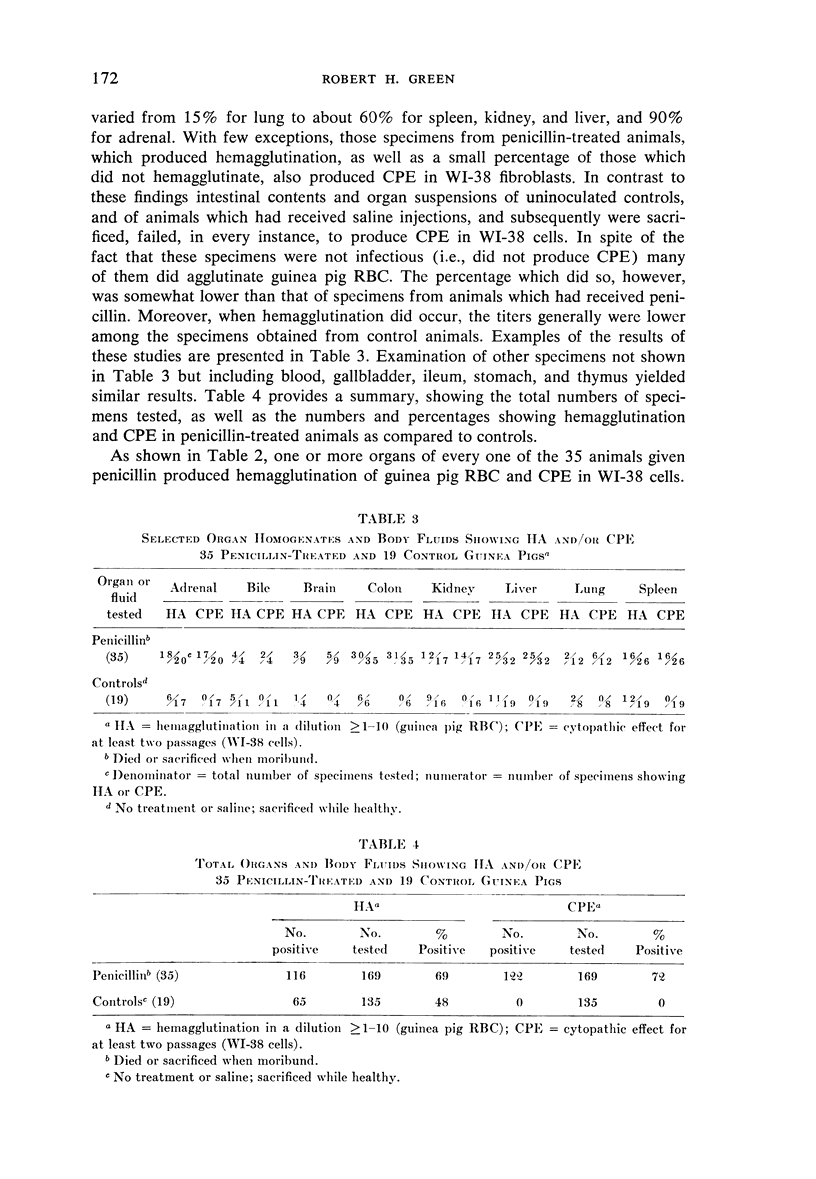
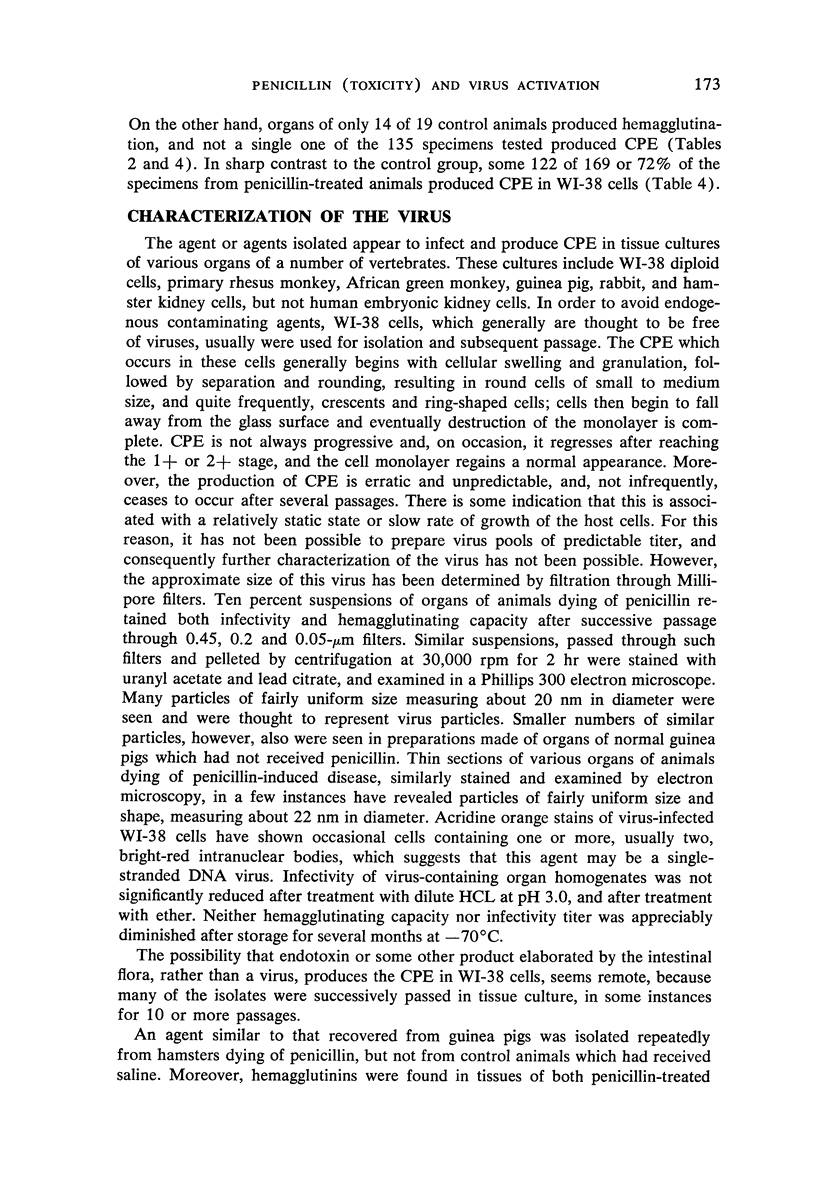
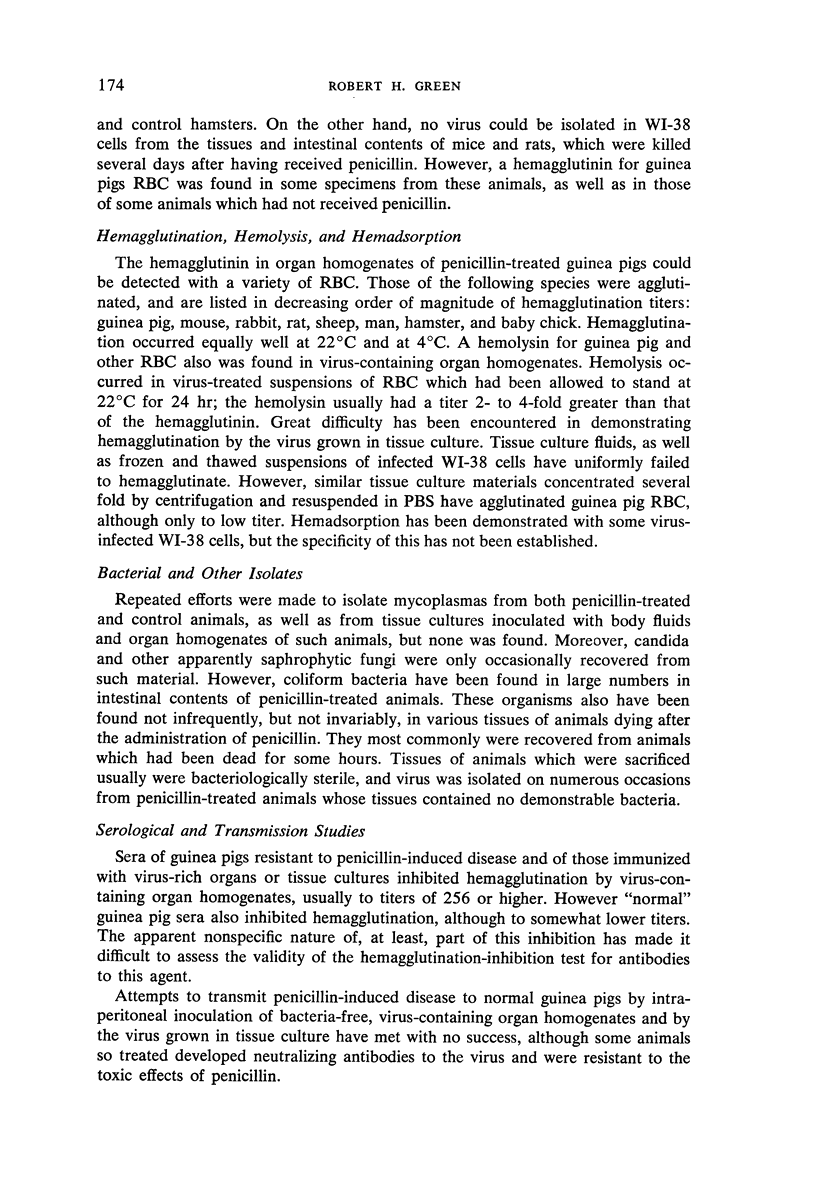
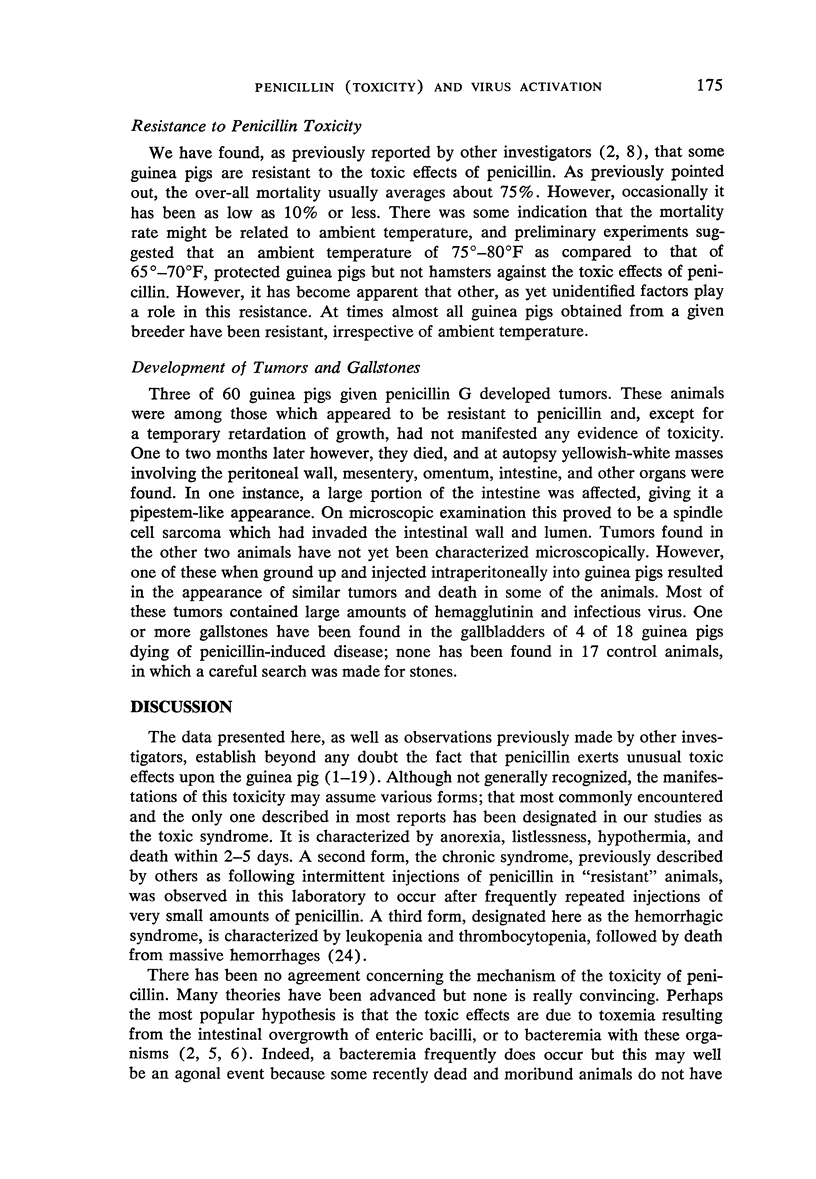
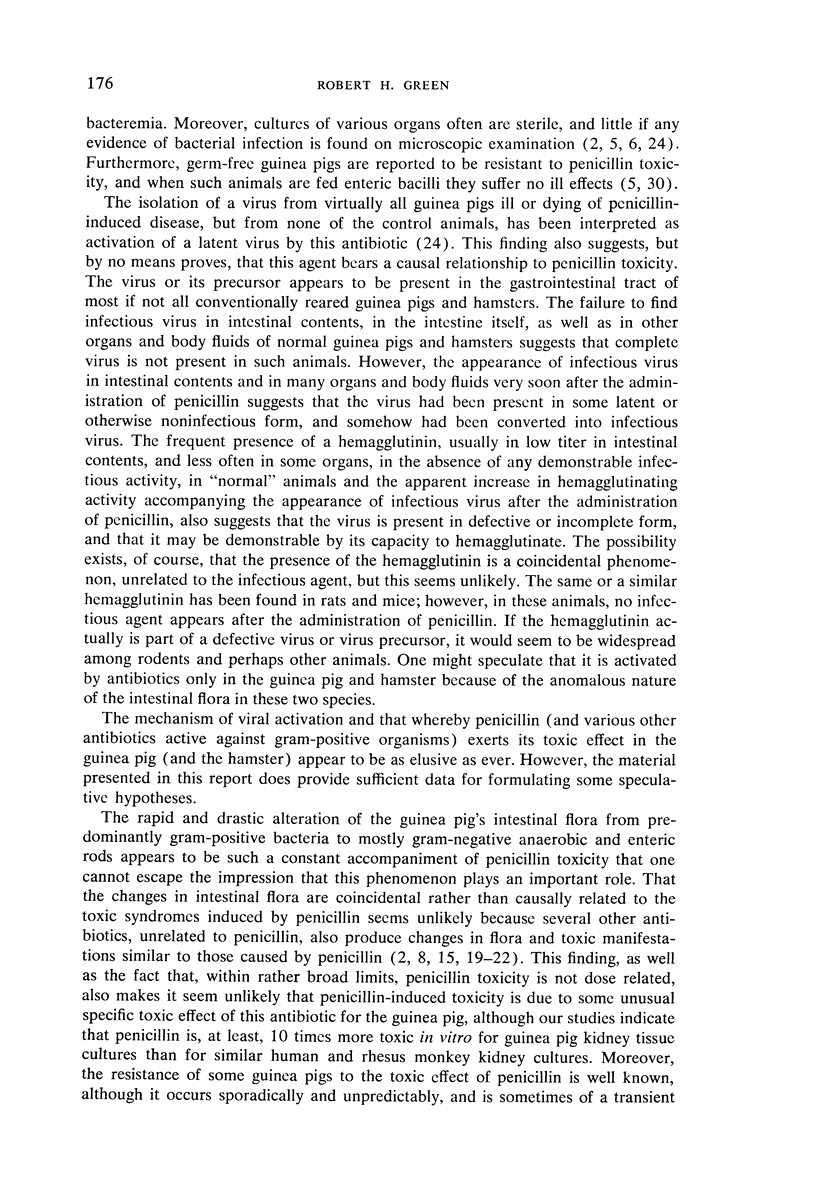
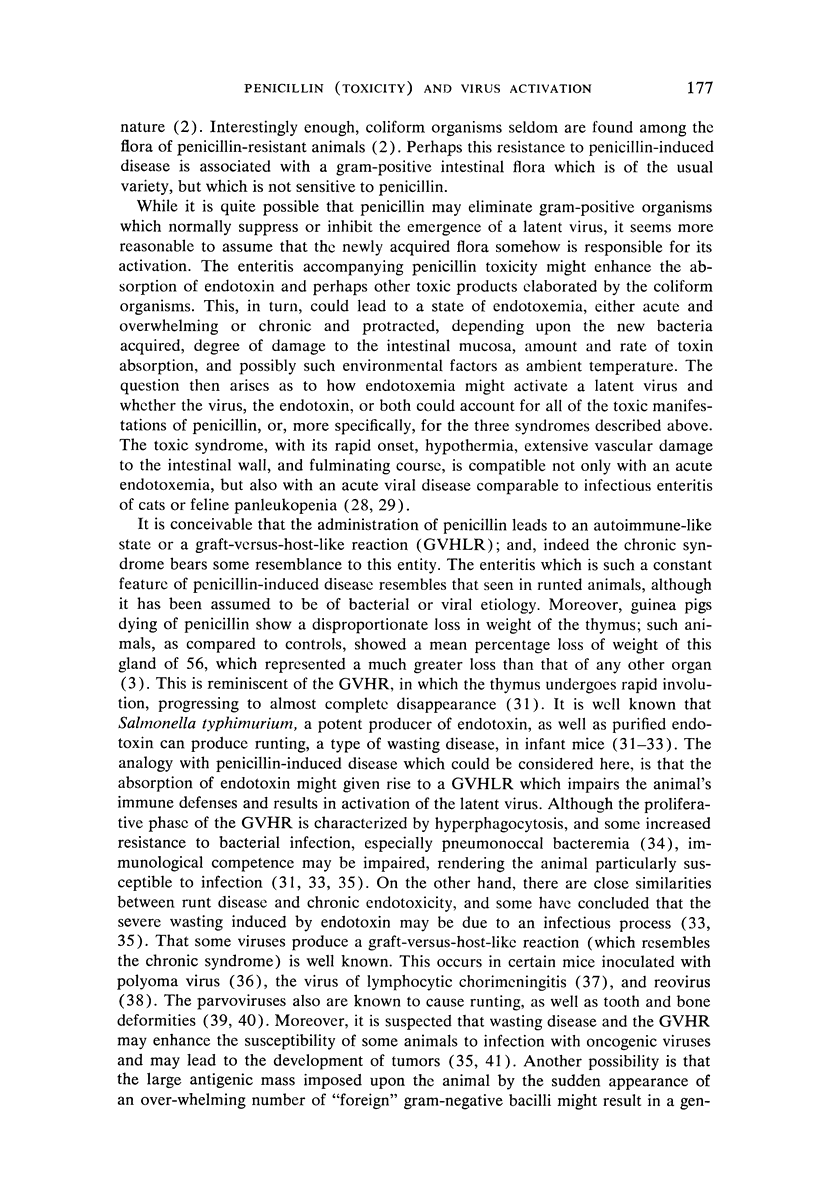
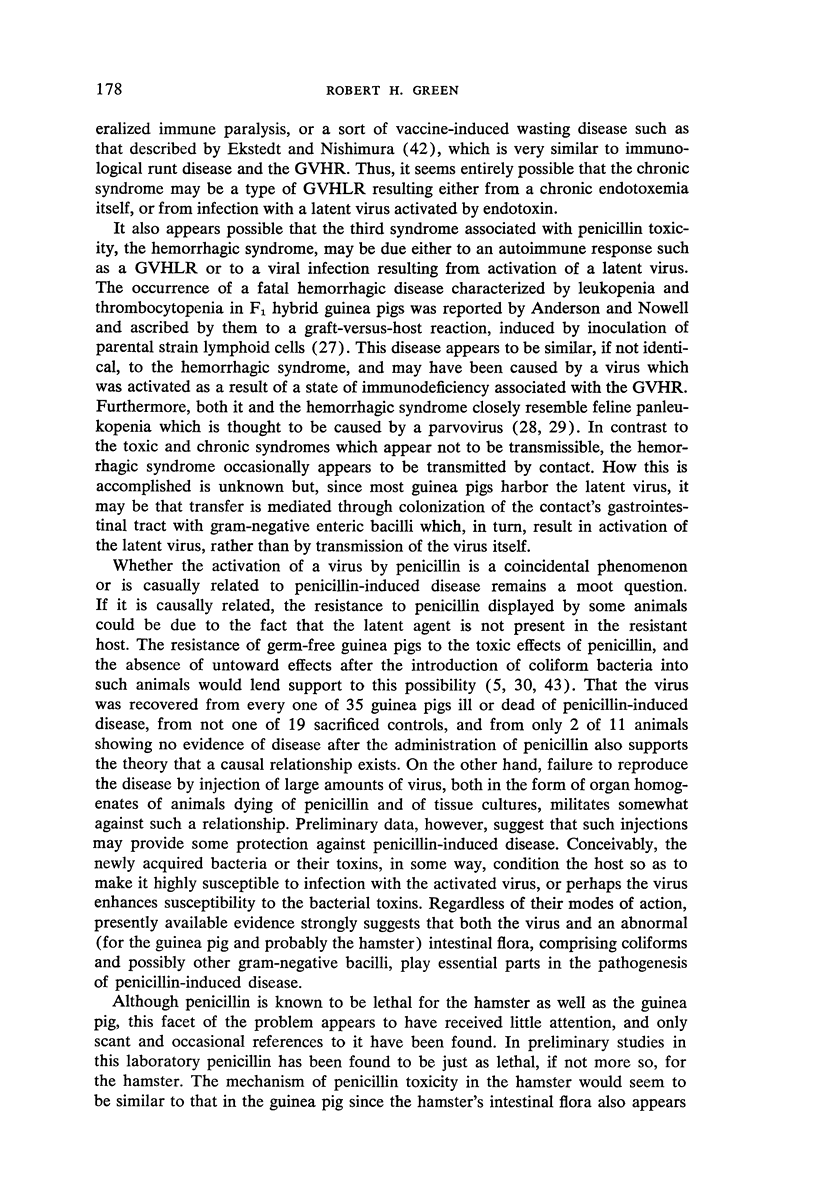
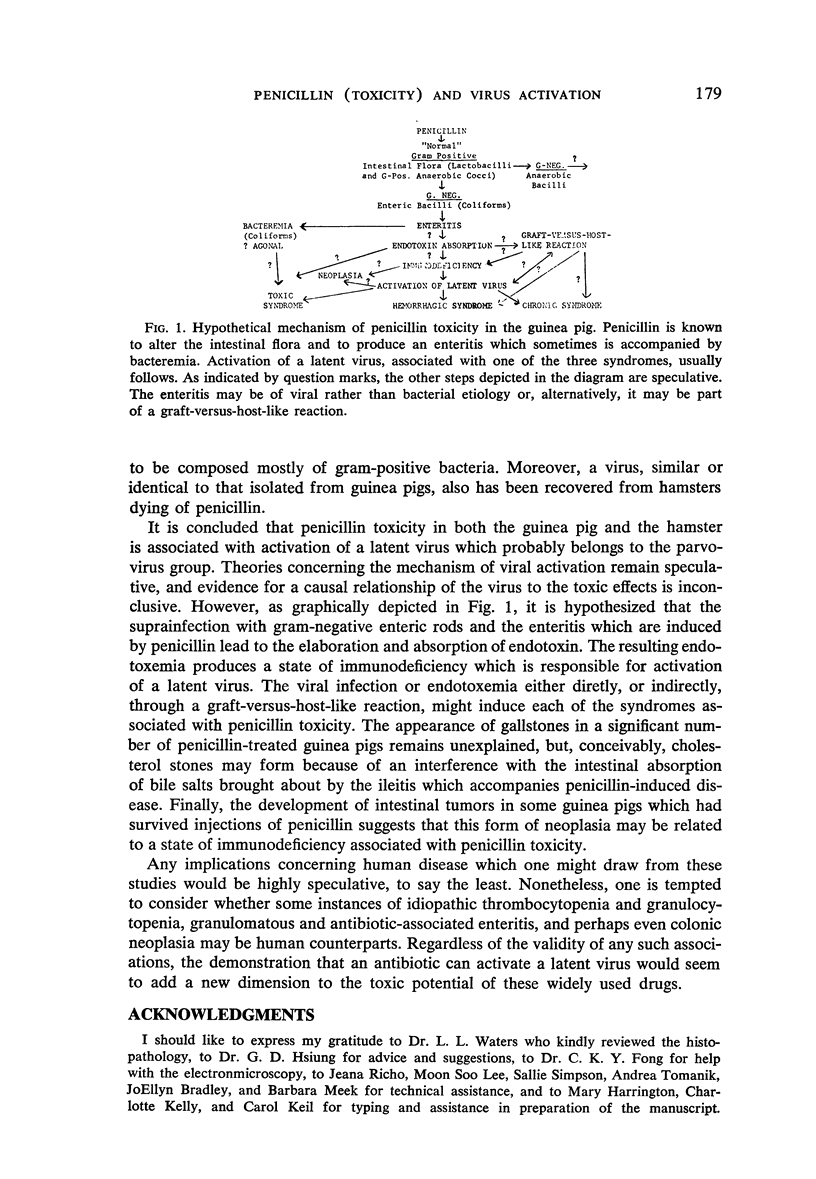
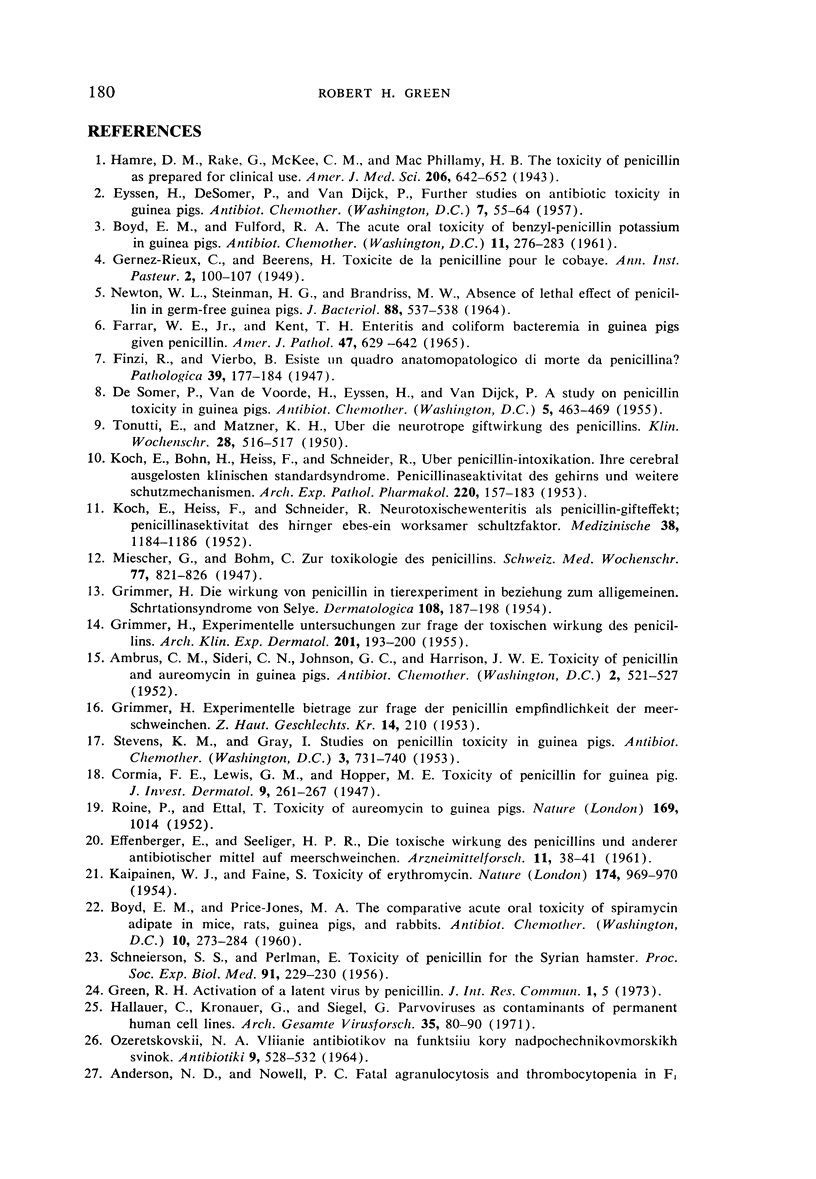
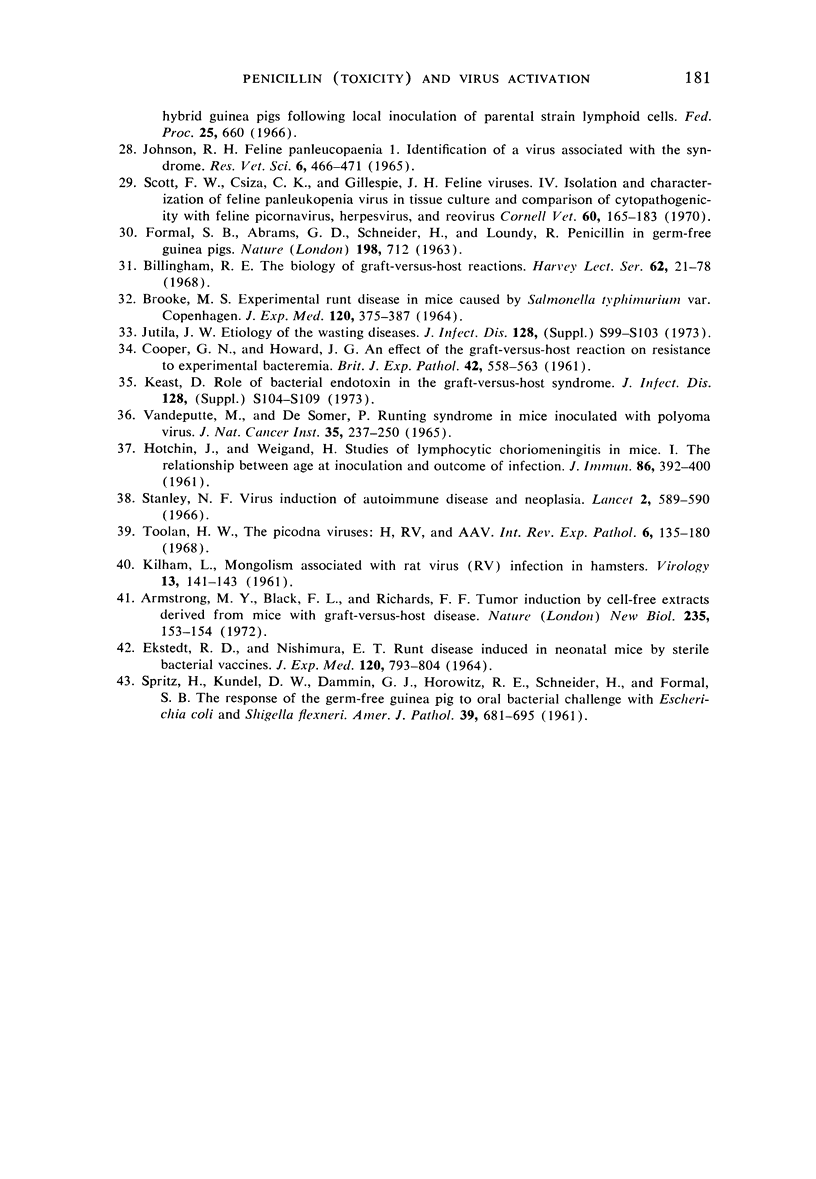
Selected References
These references are in PubMed. This may not be the complete list of references from this article.
- Armstrong M. Y., Black F. L., Richards F. F. Tumour induction by cell-free extracts derived from mice with graft versus host disease. Nat New Biol. 1972 Feb 2;235(57):153–154. doi: 10.1038/newbio235153a0. [DOI] [PubMed] [Google Scholar]
- BOYD E. M., PRICE-JONES M. A. The comparative acute oral toxicity of spiramycin adipate in mice, rats, guinea pigs, and rabbits. Antibiot Chemother. 1960 May;10:273–284. [PubMed] [Google Scholar]
- BROOKE M. S. EXPERIMENTAL RUNT DISEASE IN MICE CAUSED BY SALMONELLA TYPHIMURIUM, VAR. COPENHAGEN. J Exp Med. 1964 Sep 1;120:375–387. doi: 10.1084/jem.120.3.375. [DOI] [PMC free article] [PubMed] [Google Scholar]
- Billingham R. E. The biology of graft-versus-host reactions. Harvey Lect. 1966;62:21–78. [PubMed] [Google Scholar]
- CORMIA F. E., LEWIS G. M., HOPPER M. E. Toxicity of penicillin for the guinea pig. J Invest Dermatol. 1947 Nov;9(5):261–267. doi: 10.1038/jid.1947.96. [DOI] [PubMed] [Google Scholar]
- EKSTEDT R. D., NISHIMURA E. T. RUNT DISEASE INDUCED IN NEONATAL MICE BY STERILE BACTERIAL VACCINES. J Exp Med. 1964 Nov 1;120:773–804. doi: 10.1084/jem.120.5.795. [DOI] [PMC free article] [PubMed] [Google Scholar]
- FINZI B., VITERBO B. Esiste un quadro anatomo patologico di morte da penicillina? Pathologica. 1947 JulâAug;39(637):177–185. [PubMed] [Google Scholar]
- FORMAL S. B., ABRAMS G. D., SCHNEIDER H., LAUNDY R. Penicillin in germ-free guinea pigs. Nature. 1963 May 18;198:712–712. doi: 10.1038/198712a0. [DOI] [PubMed] [Google Scholar]
- Farrar W. E., Jr, Kent T. H. Enteritis and coliform bacteremia in guinea pigs given penicillin. Am J Pathol. 1965 Oct;47(4):629–642. [PMC free article] [PubMed] [Google Scholar]
- GRIMMER H. Die Wirkung von Penicillin im Tierexperiment in Beziehung zum allgemeinen Adaptationssyndrom von Selye. Dermatologica. 1954 Mar;108(3):187–198. [PubMed] [Google Scholar]
- GRIMMER H. Experimentelle Untersuchungen zur Frage der toxischen Wirkung des Penicillins. Arch Klin Exp Dermatol. 1955;201(2):193–200. [PubMed] [Google Scholar]
- GRIMMER H. Experimenteller Beitrag zur Frage der Penicillinempfindlichkeit der Meerschweinchen; vorläufige Mitteilung. Z Haut Geschlechtskr. 1953 Apr 1;14(7):210–215. [PubMed] [Google Scholar]
- HOTCHIN J., WEIGAND H. Studies of lymphocytic choriomeningitis in mice. I. The relationship between age at inoculation and outcome of infection. J Immunol. 1961 Apr;86:392–400. [PubMed] [Google Scholar]
- Hallauer C., Kronauer G., Siegl G. Parvoiruses as contaminants of permanent human cell lines. I. Virus isolation from 1960-1970. Arch Gesamte Virusforsch. 1971;35(1):80–90. doi: 10.1007/BF01249755. [DOI] [PubMed] [Google Scholar]
- Johnson R. H. Feline panleucopaenia. I. Identification of a virus associated with the syndrome. Res Vet Sci. 1965 Oct;6(4):466–471. [PubMed] [Google Scholar]
- KAIPAINEN W. J., FAINE S. Toxicity of erythromycin. Nature. 1954 Nov 20;174(4438):969–970. doi: 10.1038/174969b0. [DOI] [PubMed] [Google Scholar]
- KILHAM L. Mongolism associated with rat virus (RV) infection in hamsters. Virology. 1961 Jan;13:141–143. doi: 10.1016/0042-6822(61)90043-5. [DOI] [PubMed] [Google Scholar]
- KOCH E., BOHN H., HEISS F., SCHNEIDER R. Uber Penicillinintoxikation, ihre cerebral ausgelösten klinischen Standardsyndrome; Penicillinaseaktivität des Gehirns und weitere Schutzmechanismen. Naunyn Schmiedebergs Arch Exp Pathol Pharmakol. 1953;220(3):157–183. [PubMed] [Google Scholar]
- NEWTON W. L., STEINMAN H. G., BRANDRISS W. M. ABSENCE OF LETHAL EFFECT OF PENICILLIN IN GERM-FREE GUINEA PIGS. J Bacteriol. 1964 Aug;88:537–538. doi: 10.1128/jb.88.2.537-538.1964. [DOI] [PMC free article] [PubMed] [Google Scholar]
- ROINE P., ETTALA T. Toxicity of aureomycin to guinea pigs. Nature. 1952 Jun 14;169(4311):1014–1014. doi: 10.1038/1691014a0. [DOI] [PubMed] [Google Scholar]
- SCHNEIERSON S. S., PERLMAN E. Toxicity of penicillin for the Syrian hamster. Proc Soc Exp Biol Med. 1956 Feb;91(2):229–230. doi: 10.3181/00379727-91-22221. [DOI] [PubMed] [Google Scholar]
- SPRINZ H., KUNDEL D. W., DAMMIN G. J., HOROWITZ R. E., SCHNEIDER H., FORMAL S. B. The response of the germfree guinea pig to oral bacterial challenge with Escherichia coli and Shigella flexneri. Am J Pathol. 1961 Dec;39:681–695. [PMC free article] [PubMed] [Google Scholar]
- Scott F. W., Csiza C. K., Gillespie J. H. Feline viruses. IV. Isolation and characterization of feline panleukopenia virus in tissue culture and comparison of cytopathogenicity with feline picornavirus, herpesvirus, and reovirus. Cornell Vet. 1970 Apr;60(2):165–182. [PubMed] [Google Scholar]
- TONUTTI E., MATZNER K. H. Uber die neurotrope Giftwirkung des Penicillins. Klin Wochenschr. 1950 Aug 1;28(29-30):516–517. doi: 10.1007/BF01486309. [DOI] [PubMed] [Google Scholar]
- Toolan H. W. The picodna viruses. H, RV, and AAV. Int Rev Exp Pathol. 1968;6:135–180. [PubMed] [Google Scholar]
- Vandeputte M., De Somer P. Runting syndrome in mice inoculated with polyoma virus. J Natl Cancer Inst. 1965 Aug;35(2):237–250. [PubMed] [Google Scholar]


